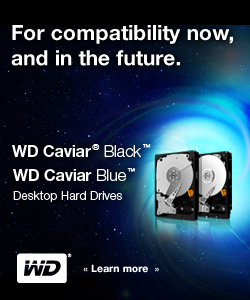Advanced Format Definitions, Abbreviations, and Conventions
- 512 Byte emulation (AF 512e or 512e):
Denotation for sector size on the media as using industry-standard Advanced Format technology/ies (e.g. 4,096 bytes-per-sector) while the data passed through the device interface is formatted to 512 Bytes-per-Sector.
- 512 byte:
Traditional, legacy sector architecture used by the hard disk drive industry for over 30 years until the adoption of Advanced Format technology/ies. Sector size on the media (physical) and the block size of the data passed across the interface (logical) are 512 bytes-per-sector.
- 4K:
Shortened form to typically denote 4,096 bytes-per-sector.
- 4K native (AF 4Kn or 4Kn):
Sector size using Advanced Format (AF) industry standards to denote that the sector size on the media and the data passed across the host interface from the device interface are formatted to 4,096 bytes-per-sector.
- Advanced Format (AF):
Terminology created and ratified by IDEMA committees to refer to the newer sector size and/or block architecture that is expanded from the traditional 512 byte-per-sector and block size formats.
- Advanced Format (AF) technology/ies:
Formal name for Advanced Format (AF).
- AF Aware:
Applications or programs that simply recognize AF 512e HDDs but do not deliver the full available performance from the system.
- AF Logo:
A logo or set of logos created and controlled by IDEMA AF committees that signifies industry-standard AF technology/ies.
- AF 512e Logo:



- AF Optimized:
Computing components that accommodate and are optimized around AF technologies to take full advantage of the available system performance.
- alignment:
Short form of partition alignment.
- Alignment 0:
The term “Alignment 0” indicates there is no offset of the physical sectors of the AF drive relative to the logical sector location used by the host system.
- Alignment 1:
The term “Alignment 1” indicates there is an offset between the physical sectors of the AF drive relative to the logical sector location used by the host system.
- alignment tool or alignment utility:
A piece of software which resides outside the AF HDD and is used to map the geometry on the AF HDD so that the logical sector start of the file system matches the physical sector start on the AF HDD.
- Hard Disk Drive (HDD):
A device which uses rotating media and magnetic recoding systems to process and store digital data.
- misalignment:
Condition where the start of the logical sector location used by the host file system and/or software application does not match the start location of the physical sector on an AF HDD. Misalignment may result in a degradation of the performance capabilities of the AF HDD-installed system.
- partition:
A set of sectors organized to appear as a single logical division of the total available hard disk space.
- partition alignment:
Refers of the starting location of the logical block (LBA) or sector partition created by the operating system.
- sector size:
The number of bytes in a single, physical unit on the media of a hard disk drive. The sector is used to describe a section of the media in which data is stored.
- Read-Modify-Write (RMW):
The real-time operation whereby a legacy, 512-byte logical sector of data is loaded into the buffer (Read) on the AF 512e HDD and is inserted (Modify) to fit into the 4K sector size before being written (Write) to the media of an AF 512e HDD.
- SmartAlign:
Proprietary firmware developed and owned by Seagate which handles alignment at the drive level. SmartAlign is only found on Seagate AF 512e hard drives.





